Natural solutions to treating anemia in dogs and cats
Anemia is a decrease in number of red blood cells (RBCs) or decreased amount of hemoglobin in the blood.
Anemia is the most common disorder of the your pet’s blood. There are several different kinds of anemia, caused by a variety of underlying causes.
Hemoglobin (found inside Red Blood Cells) carry oxygen from the lungs to the rest of your pet’s body.
Anemia leads to a lack of oxygen in your dogs and cats cells. Animals need oxygen to live- . Depending on the extent of the anemia, there is a number of different clinical signs.
Signs and symptoms
Signs and Symptoms of anemia vary based on the underlying cause, but here are the common ones:
• Weakness,
• General tiredness
• Shortness of breath,
• Sleeping more
• Poor appetite
• Dizziness
• Fainting
• Pale gums, paleness of the whites of the eyes ( sclera)
• Yellow around eyes
• Rapid Heart rate
• Weak pulse
• Pica, which is consumption of non-food based items such as dirt, paper, wax, grass, ice, and hair, may be a symptom of iron deficiency
Diagnosis
IF you suspect that your dog or cat is anemic, the first step is to have a complete physical exam by your veterinarian.
PACKED CELL VOLUME ( PCV)
This is a percentage of the blood’s volume that is taken up by red blood cells.
A few drops of blood are spun in a centrifuge, and the blood tube is measured against a chart to see the PCV.
Normal PCV
Dog 37 – 55%
Cat 24 – 45%
Complete Blood Cell Count:
This shows the number of red cells, and hemoglobin level, PLUS red blood size, and determine the number of young or ‘immature’ red blood cells called reticulocytes.
Blood Smear
Microscopic blood smear is used to determine what type of red blood cells are present, to estimate the number of immature red cells ( reticulocytes), and see signs of red cells that suggest a certain type of disease.
In immune mediated hemolytic anemia, a type of cell called a spherocyte is often present. In cases of splenic tumors, damaged red cells called schistocytes may be found.
In cats the microscopic exam can often pick up a common parasite that can cause anemia, called Hemobartonella
Autoagglutination Test
Here we are looking for clumping of the red blood cells- they ‘auto-agglutinate’ due to the presence of antibodies that cause them to clump together.
Chemistry Panel
This complements the blood test- here we are looking at protein levels – in blood loss the protein in the blood is also lower. In organ failure, especially kidney failure animals are anemic. We would see elevated urea/creatinine.
X-ray
Can be used to see if a cancerous mass ( such as a spleen tumor) is present
Ultrasound
Typically used after X-ray to confirm a mass/cancer
Coombs test
This is a specific test looking for the presence of auto-antibodies. These are antibodies attacking your pet’s red blood cells found in immune mediated hemolytic anemia.
Feline Leukemia test/FIV test
Run on most cats when an infectious cause of the anemia is suspects. Many cats with hemobartonella have FelV/FIV
Classification
In animals ( and people), there are many different causes of anemia- but in order to diagnose it, we must first classify the anemia.
The easiest way is to measure the young or immature red blood cells, called reticulocytes. These tell us if your pet’s bone marrow is responding to the anemia and then producing more red blood cells to deal with the lower red blood cell count.
From there we can then diagnose the most likely cause of the anemia.
The first step is to determine if the anemia is regenerative or non-regenerative based upon a reticulocyte count.
Regenerative anemias are characterized by reticulocyte counts of over 80,000/ul. Nonanemic animals have reticulocyte percentages of ?1 % of the total RBCs
Non-regenerative anemias are characterized by reticulocyte counts of less than 80,000/ul and a reticulocyte production index of less than 2.5.
Anemia that is usually regenerative includes: Blood Loss, Immune Mediated, Infectious disease
Anemia that is non regenerative: innapetance based on cancer, organ failure, chronic blood loss ( ie parasites), and chronic disease.
CAUSES and TREATMENT OF ANEMIA in DOGS AND CATS
ANEMIA- GENERAL REMEDIES
SOLUTIONS
SEE YOUR VETERINARIAN. Anemia is a sign of a potentially severe underlying disease. It is important that your veterinarian diagnose the cause and begin appropriate treatment immediately.
NO VEGETARIANS HERE. Add food that is high in iron and it will boost your pet’s ability to carry oxygen. Cooked liver is a great source of iron: give 1 ounce a day to your cat, and 4 ounces a day to your dog.
VITAMINS. B vitamins are an important component of the blood cell’s ability to carry oxygen. A vitamin B complex liquid elixir can be purchased at your local pharmacy. Give it twice daily.
HERBAL:
Three herbs can be helpful: NETTLE, RED CLOVER and BURDOCK ROOT. These can be purchased at most health-food stores. Give 1 tsp per 10 pounds of body weight once daily. Burdock is the most important of these 3 herbs.
Parasites-Fleas, ticks, Hookworms
SIGNS
Fleas: Itch, Itch, Itch!!! Your pet will not stop scratching. If you look more closely you will probably see flecks of black dirt; this is flea feces.
Ticks: Small blood-sucking parasites attached to your pet. Your pet may be anemic
Hookworms and other intestinal parasites- You see small white squiggly worms in your pets stool, most commonly diagnosed by fecal flotation.
SOLUTIONS
Effective control depends on treating your pet and your home (indoors and outdoors) at the same time. There is no ‘magic flea bullet’ – it is work and persistence, especially if you want to avoid conventional flea treatments.
Flea Control on your pet:
Bathe/Spray your pet with a nontoxic shampoo, such as one containing pyrethrins or natural pyrethrum -these are the least toxic of all the insecticides used on pets.
Cedar oil is a non-toxic natural substance, has been proven effective in the eradication of infestations in pets. There are a few brands, but I prefer Triple Sure, Natural Flea and Tick Spray.
Cancer-Hemangiosarcoma
SIGNS
This is a tumor of the lining of the red blood cells. The signs depend upon where the tumor grows. Most common is the spleen being affected (a growth on the spleen) and subsequent signs of internal bleeding: your dog will be anemic (pale gums), may be breathing heavier (or generally weak), he may have a distended abdomen, there may be weight loss, and/or a faster heart rate. If it is a skin form, there is a black/red skin mass. If the heart is affected you can see signs of heart disease, including weakness, difficulty breathing, irregular or faster heart rate and increased respirations.
SOLUTIONS
A DIAGNOSIS AT YOUR VETERINARIAN. If your pet has any of the above signs, especially anemia and increased respirations, have a exam and appropriate tests (X-rays, and Blood Work). Surgery is advised for the skin tumors, and in certain cases of splenic tumors (especially if it has not spread to the lungs or other organs).
ANTIOXIDIZE. Antioxidants have been shown to slow the growth and spread of some types of cancer. Vitamin C, Vitamin E and Selenium are the most effective. Vitamin C dose: dogs 100 mg per 10 lbs of body weight twice daily; cats, 250 mg twice daily. Vitamin E dose: dogs and cats 100 IU per 10 lbs body weight twice daily. Selenium dose: dogs and cats, 25 ug per 10 lbs twice daily.
FLAVONOIDS. These are compounds in a class of their own. They compose the thousands of structures that give the bright color to fruits and vegetables. They are antioxidants as well as having anti-cancer properties. These include flavones, (apigenin), isoflavones (genistein), and flavonols (quercetin). Purchase a mixed bioflavonoid product that contains polyphenols, particularly EGCG (epigallocatechin-gallate), which is the specific flavonoid isolated from green tea. The dose for a 10 lb dog or cat is 250 mg daily
Immune Mediated Hemolytic Anemia
SIGNS
There are a large number of autoimmune diseases. Most common is when the red blood cells are attacked, causing anemia. This is called Autoimmune Hemolytic Anemia (AIHA). In cases of AIHA your pet will be pale, lethargic, and often have difficulty breathing.
SOLUTIONS
TO THE VET. In cases of autoimmune disease, especially immune mediated hemolytic anemia (AIHA), and polyarthritis, you need to have these confirmed by diagnostic tests. AIHA can be fatal if not treated quickly – so if you suspect this, have see your vet ASAP.
Immune Suppression
Steroids, such as Prednisone are the most common medications used for immune suppression. Stronger immune suppressives are used IF prednisone is not working. Two most common medications used are azathioprine and cyclophosphamide
HYPOALLERGENIC DIETS. It is theorized that many of the autoimmune diseases start via allergens that ‘leak’ from the gut and cause the immune system to react. This means changing your pet’s food to an entirely different type which she has never eaten before. The most important part is a unique protein source. There are a number of commercially available allergy diets for pets. One that I prefer for dogs is Fish and Potato. For cats, it can be more difficult, but one I have had luck with has duck as the protein source. These diets can also be made at home, with the following recipes:
Home Allergy Diet for a 50 lb Dog
Boiled white fish or Canned tuna 1 cup
Boiled potatoes or Cooked rice 4 cups
Calcium carbonate or Tums 1 teaspoon
Corn oil 1 tablespoon
Potassium chloride (light salt) 1 teaspoon
One-a-day multivitamin 1 tablet
Mix all ingredients together and divide into equal portions, feeding 2 1/2 cups in the morning and 2 1/2 cups in the evening.
Feline Home Allergy Diet for a 10 lb Cat
Canned Turkey 1 cup
Cooked White Rice 1 cup
Cod Liver Oil 1 tablespoon
Calcium Carbonate or Tums 1/2 teaspoon
Potassium Chloride 1/4 teaspoon
One-a-day Vitamin 1/2 tablet
Taurine 500 mg
Mix all ingredients so they are well blended together. This will make 2 cups of food, enough for 2 days. Feed 1/2 cup in the morning and 1/2 cup in the evening. Whatever food you choose, it must be fed for 12 weeks.
Drug reactions to medications such as Acetaminophen, Estrogen
SIGNS
Acetaminophen metabolites cause liver and red blood cell damage.
Cats are VERY sensitive to acetaminophen ( Tylenol) and can be poisoned by as little as one 325 mg tablet.
Signs of toxicity show within 1-4 hours:
Brown-colored blood, known as methemoglobinemia, dark blue/brown gums (cyanosis), rapid and difficulty breathing, depression, low body temperature, weakness, and extremity swelling.
SOLUTIONS
TO YOUR VETERINARIAN. If your pet is showing signs of ingesting a poison, it is important that she is examined by your veterinarian and treated appropriately.
PURGE THE POISON. In most cases of poisoning, getting your pet to vomit is the most important thing that you can do. To induce vomiting, give hydrogen peroxide at 1 teaspoon per 10 lbs of body weight. If your pet does not vomit in 10 minutes, repeat again. Never do more than 2 treatments of peroxide. You can also try salt: dilute 1 teaspoon of salt in a tablespoon of water per every 10 lbs of body weight.
In cases of anemia from estrogen, the MOST important point is to recognize this, and withdraw the drug. Your pet’s bone marrow can respond, and replenish the red blood cells.
Feline Leukemia Virus/Hemobartonella
SIGNS
The signs all vary; but they all relate to having a chronic suppressed immune system and it varies as to which organs are affected. In all diseases you can see weight loss, severe dental disease (gingivitis), chronic poor skin, cancer (lumps, enlarged lymph nodes), ongoing diarrhea, recurrent fevers.
SOLUTIONS
CONVENTIONAL: Treating Hemobartonella with antibiotics. Doxycycline used for 14 days is most common, Enrofloxacin is also used. In severe cases of ongoing hemolysis (ie the red cells are continuing to be attacked), then a corticosteroid, such as Prednisone may also be used.
HOMEOPATHIC:
PHOSPHORUS. For extremely weak pets; to be used in conjunction with supportive care, such as rehydration and force feeding. The dose is 30C very 4-6 hours for 2-3 days.
Ehrlichia
SIGNS
Ehrlichiosis is a parasitic disease transmitted by the brown dog tick The first phase is signs are: fever, enlarged lymph nodes, and general weakness. ( ie the flu)
Stage 2 lasts from 2-4 weeks as the organism spreads to the lungs, kidneys, and brain. If your dog is unable to mount an adequate immune response, then it proceeds to the chronic phase.
Stage 3 or chronic phase shows lower red cells and white cells (pancytopenia) breathing problems, weight loss, possible neurologic signs and bleeding problems.
SOLUTION
Treatment: The conventional treatment consists of 2 antibiotics, Tetracycline and Doxycycline, typically for 30 days.
THE SUPPLEMENT CONNECTION. Fatty Acid supplements are very helpful in decreasing the level of inflammation. Omega 3 fatty acids are most important. A great, inexpensive source is ground flax seeds; give 1 tsp per cup of dog food
PROBIOTICS. There are helpful bacteria which may slow the inflammatory response in the autoimmune diseases. Get a good quality probiotic, such as Lactobacillus Acidophilus and Bifidobacterium, and feed a high dose: 1 capsule per 40 lbs daily.
Chronic Renal Failure
SIGNS
Your cat or dog is drinking more water and urinating more often. Your pet may be losing weight, specifically loss of muscle mass, as the kidneys lose protein. As kidney failure advances, your pet may become weak due to anemia. He may have a decreased appetite due to a buildup of toxins in the blood stream. In advanced cases, he will be dehydrated and completely off food. In some pets, kidney disease causes elevated blood pressure, which may affect his eyesight.
The kidneys filter blood in the body. They remove waste products (urea and creatinine), retain essential nutrients (potassium), maintain hydration by retaining water, produce a hormone to stimulate red blood cell production, and produce urine. Most cases of kidney failure are due to the kidney shutting down for no specific reason (idiopathic). In other cases the cause may be due to genetic disease (kidney cysts often found in Persians cats), infections (severe bacterial kidney infections), and toxins (such as antifreeze). There are no signs of kidney failure until 70% of the kidneys are no longer functional.
FLUID, FLUID, FLUID. The most important thing that you can do for your pet with renal failure is to maintain adequate hydration. Offer lots of fresh water. If your cat is not a great water drinker, then make the switch to canned food.
PROBIOTICS. Azodyl is a natural probiotic product for the reduction of the toxins that increase in Kidney failure (azotemia) in dogs and cats. These probiotics metabolize and flush out uremic toxins in the bowel. They slow down uremic toxin buildup in the blood and helps prevent further kidney damage. I have been using this very successfully in both dogs and cats with Kidney failure. The Azodyl dose is 1 capsule per 10 lbs daily, to a maximum 4 caps per day.
PHOSPHORUS REDUCTION:
In early stages of Kidney Disease, the single biggest mineral which damages the kidneys is phosphorus. This mineral speeds up destruction of the remaining kidney cells. Feed a diet lower in phosphorus and use phosphorus binders.
ALOH. Aluminum Hydroxide (ALOH) is a phosphorus binder that is used to reduce phosphorus levels in cats and dogs with renal failure.
ERYTHROPOETIN. Nonregenerative anemia is quite common in chronic renal failure. The kidneys produce a hormone called erythropoietin ( it stimulates bone marrow to produce red cells). In renal failure less of this hormone is produced, resulting in anemia. Your veterinarian can give your cat injectable erythropoietin which has certain risks, but has helped many a cat with Kidney failure.
Dr. Andrew Jones
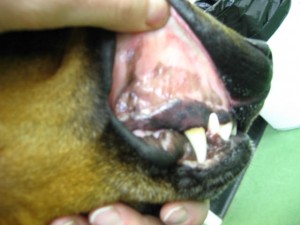
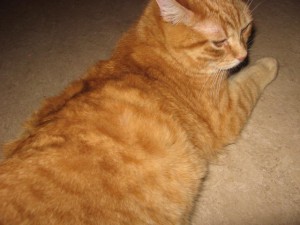

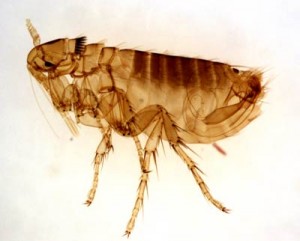
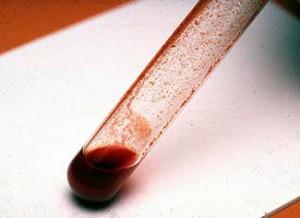
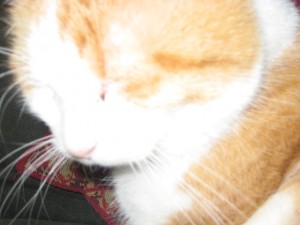
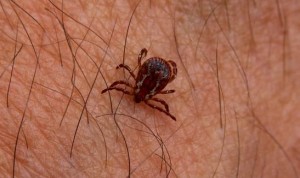

Extremely good article. Always informative and helpful.
Pretty informative. My 2 yr old cocker has IMHA or IMT..they never decided for sure which. He was on huge doses of prednisone, and Atopica, which have been decreased and is off prenisone now and only on 25mg Atopica 2X week after 13 months. He is doing well, but it is a scary disease.
My golden retriever was confined at the animal clinic for one week due to kidney failure and anemia,now were doing home medications by feeding her with a can of prescription diet daily for about a week already on the 7th day of her home medication she discharged some kind of sticky like phlegm,now she’s improving she wagged her tail and started barking what else can we do to improve her
condition,her doctor gave her some local herbal capsule for her kidney and NEPRO specialized liquid nutrition.
My cat of 10 yrs was diagnosed with the Regenerative anemia as she was not eating & she loved to eat! Her hefty 23 lbs had dropped to 19 lbs, her blood count was 16, the vet had her on prednisone, antibiotics & an appetite stimulant that people use for seizures.This last medicine made her fall over & have some kind of seizure that would leave her panting & drooling, I thought she was having a heart attack, I stopped this medication, from this day on, she went downhill, drank tons of water & was urinating alot.We were going to the vet 3x’s a week to have her blood tested. We tried all kinds of foods,hand feeding her, baby food anything, she finally just wouldn’t eat. My vet never made mention of vitamins, just that we should have a Spleen & Liver needle aspiration done at the specialist hospital, by this time it was now almost 3 weeks after her first visit. We decided not to put her through this, she had a bad weekend,started to have droplets of blood coming from her nose, stopped drinking water, I slept on the floor with her curled in my arms & she passed away. It was very sad, she was my daughter’s cat, we had 2 sibling female cats, one was my daughters & the other one that is still living is mine. We miss this cat terribly, even the dogs miss her. I think she hid her illness & distress from all of us, it was 3 weeks from her first visit to the vet that she went.
Hemolytic anemia can also be caused in cats by ingestion of onions or foods containing onions.
Very good write-up, I’ll bookmark Anemia in Dogs and Cats | Veterinary Secrets Blog with Dr. Andrew Jones, DVM.